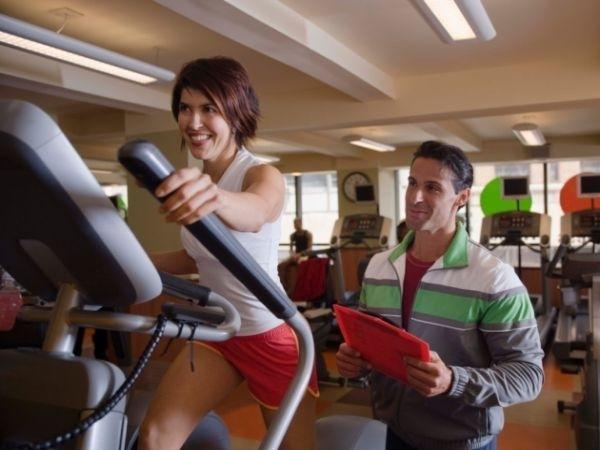There isn’t a day that goes by that I don’t think about my chemotherapy-induced cardiomyopathy. I frequently ask myselfif I could have prevented it?”
Cardiotoxicity related to chemotherapy can manifest decades after treatment with a threefold higher mortality rate as compared to idiopathic dilated cardiomyopathy
I’ve researched and written about how “pre-habilitation” helps cancer patients recover from chemotherapy, radiation and surgery better and faster. While the study linked below doesn’t say it, I have to wonder if pre-habilitating helps reduce the patient’s chances of developing chemotherapy-induced cardiomyopathy.

Or I should say that exercise during cardio-toxic chemo, can prevent chemotherapy-induced cardiomyopathy??? Could the “changes in muscle strength” mentioned below prevent the damage done to the heart by cardio-toxic chemo?
Keep in mind that I have always exercised regularly. It was only during chemotherapy- specifically my autologous stem cell transplant- that I didn’t exercise. When I tried to just go for a walk while in the hospital the nurse looked at me funny…
For the record, most cancer patients feel lousy during chemo- think nausea, fatigue, zero appetite. So each and every cancer patient undergoing chemo will have to push him or herself hard in order to exercise during chemo.
Exercise, before, during and after active therapy is essential for the cancer patient.
If you are about to undergo chemo, certainly a chemo regimen known to be cardio-toxic (see below), please consider moderate exercise during chemotherapy.
- anthracyclines
- cyclophosphamide,
- ifosfamide,
- cisplatin,
- carmustine,
- busulfan,
- chlormethine and
- mitomycin
- paclitaxel,
- etoposide,
- teniposide,
- the vinca alkaloids,
- fluorouracil,
- cytarabine,
- amsacrine,
- cladribine,
- asparaginase,
- tretinoin and
- pentostatin.
Scroll down the page, post a question or comment and I will reply to you ASAP.
Thank you.
David Emerson
- Cancer Survivor
- Cancer Coach
- Director PeopleBeatingCancer
“Exercising while undergoing chemotherapy (chemotherapy-induced cardiomyopathy) can help cancer patients overcome the treatment’s debilitating effects and return to normal life faster…
Previous research has shown that exercise benefits cancer patients, but this is the first to look at how exercise timing can impact treatment’s effects.
Those who worked out during chemotherapy saw a smaller drop in peak oxygen uptake, or VO2 peak — an indicator of overall fitness — after their chemo was finished. At that point, their VO2 peak had declined by about half as much as the other group’s (–2.8 mL/kg/min versus –5.8 mL/kg/min).
They also saw smaller declines in strength, quality of life, and physical function. And they reported less fatigue.
“Although patients are tired from the treatment, physical exercise can induce changes in muscle strength and increase physical condition…”
Exercise produces cellular changes in the body, stimulating the production of mitochondria in muscle cells, Walenkamp explains.
“Having more [mitochondria] increases your body’s energy supply. Also, exercise increases oxygen circulation. This allows you to more efficiently use energy…”
Preserving lung and heart fitness matters for cancer patients, as it may improve chances of survival. A separate study found that for every additional 1 peak metabolic equivalent (the amount of energy you spend sitting still) cancer patients achieved during an exercise test, the risk of dying from cancer decreased by 25%.
What kind of exercise should patients do? In the Dutch study, participants did 30 minutes of cardio (stationary bike, treadmill) 3 days a week, 20 to 30 minutes of weight training twice a week..
More research is needed to determine the safest workout for different types of cancer, Walenkamp says. People with lung or bone cancers, for example, may need to be extra cautious and be sure to work with a physical therapist who specializes in assisting cancer patients…”
“Exercise is an important part of a cancer treatment plan. A growing amount of research shows that regular exercise can greatly improve physical and mental health during every phase of treatment-possibly preventing chemotherapy-induced cardiomyopathy. Even if you were not active before your cancer diagnosis, an exercise program that meets your unique needs can help you get moving safely and successfully…What are the benefits of exercise for people with cancer?There are many benefits to exercise during cancer treatment. Some of these include:Improve how treatment works and reduce treatment side effects. In general, exercise can improve the body’s response to treatment, no matter the stage or type of cancer. Regular exercise has been shown to:
- Reduce treatment-related fatigue
- Maintain heart and lung fitness, physical ability, and strength
- May reduce feelings of anxiety and depression, and improve quality of life
- After surgery for lung cancer, decrease the amount of recovery time needed in the hospital
In some studies, exercise has also been associated with better survival rates for certain cancers, including breast cancer and colorectal cancer.
Improve overall health status. In general, exercise can improve a patient’s overall health. Some of the health benefits of exercise include:




